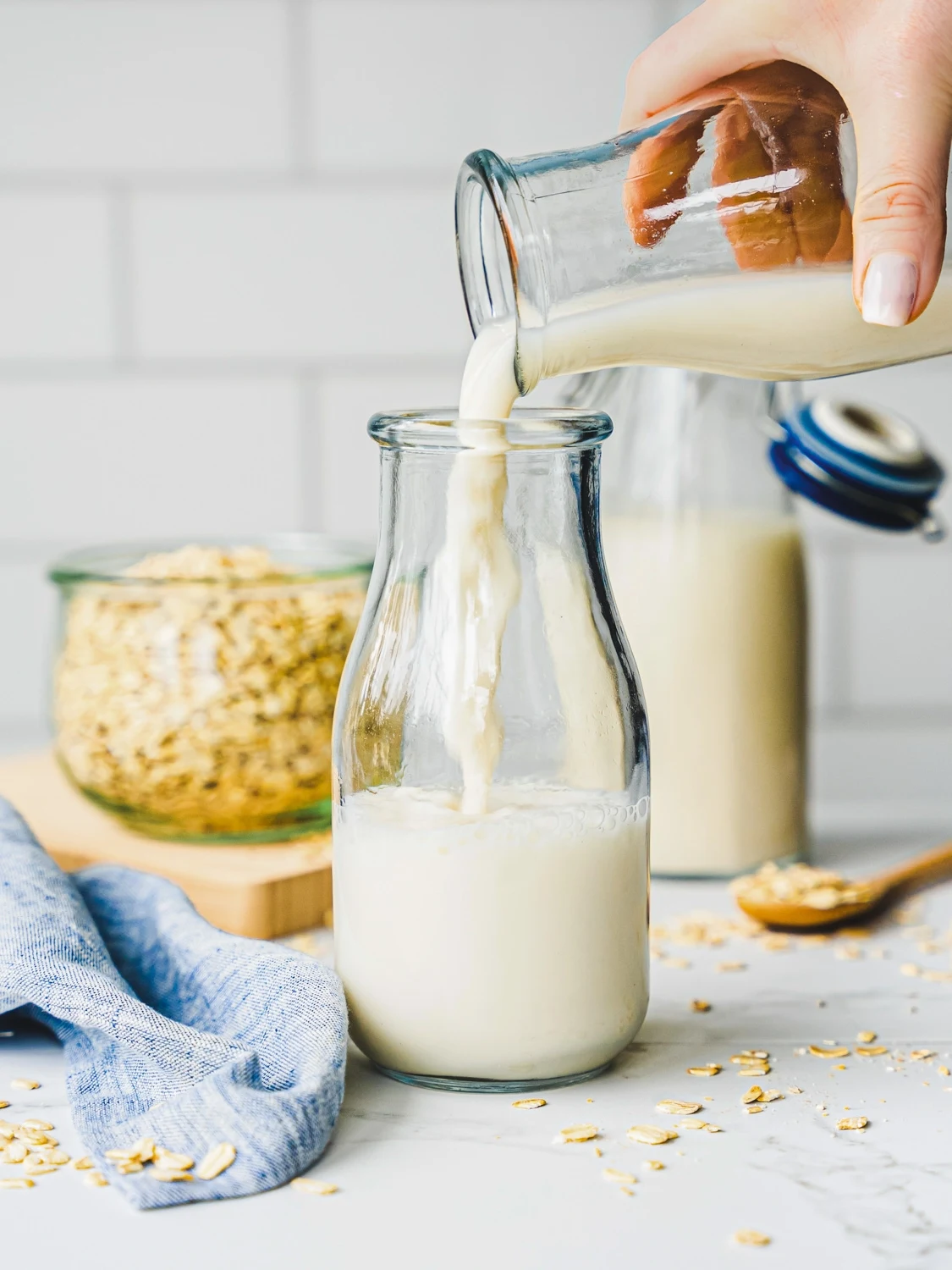The plant-based milk shake-up: pea, pistachio, oat, almond, and potato milk.
Historically, your milk options consisted of whole, 2 per cent, 1 per cent, and fat-free (or skim). Plant-based milk made from nuts, beans, or grains, like almond, soy, coconut, cashew, oat, and rice, fills the fridge shelves of supermarkets right now. However, the plant-milk industry's fertile terrain continues to provide new possibilities, such as pistachio, pea, and even potato milk. It would appear that if you can grow it, you can manufacture milk from it.
So, are these new options nutritionally superior to other plant milk, or are they simply the same?
Nuts, beans, or grains are ground into a pulp, strained, and mixed with water to produce plant-based milk. For the majority of brands, you're left with less than 10% of the original plant. Variable quantities of vitamin D, calcium, potassium, and protein are added. Any alternative milk provides comparable levels of these nutrients compared to cow's milk.
Plant-based milk is deemed "greener" than dairy milk since they produce fewer greenhouse gases. However, the cultivation of some of these plants and their transformation into milk necessitates vast quantities of water. Low-calorie plant-based milk is the norm. However, these milk products are more expensive than dairy on average.
Digestion difficulties. People with lactose intolerance or lactose sensitivity, whose bodies cannot break down and digest lactose, the milk sugar, can benefit from plant-based milk. This results in digestive issues such as diarrhoea, gas, and bloating. For those who like dairy, lactose-free and ultra-filtered dairy milk are offered.
Environmental impact. According to a study published in Science, dairy milk production produces nearly three times more greenhouse gases than plant-based milk. However, the production of some plant milk, primarily almond milk, requires considerable water. Some studies indicate that the water requirements of almond milk are comparable to those of cow's milk.)
However, if you wish to contribute to the fight against climate change, you should choose plant-based alternatives to dairy products.
Personal taste There is a considerable possibility that you will be able to locate plant-based milk that satisfies your taste preferences, given the variety of options available. Manufacturers attempt to solve the taste challenge by adding extra sugar, vanilla and chocolate flavourings, and other ingredients. Check the total and added sugar content, and keep the amount per serving to less than 10%. Obviously, the lower the sum, the better.

So, are these new options nutritionally superior to other plant milk, or are they simply the same?
Some information on plant-based milk
Nuts, beans, or grains are ground into a pulp, strained, and mixed with water to produce plant-based milk. For the majority of brands, you're left with less than 10% of the original plant. Variable quantities of vitamin D, calcium, potassium, and protein are added. Any alternative milk provides comparable levels of these nutrients compared to cow's milk.
Plant-based milk is deemed "greener" than dairy milk since they produce fewer greenhouse gases. However, the cultivation of some of these plants and their transformation into milk necessitates vast quantities of water. Low-calorie plant-based milk is the norm. However, these milk products are more expensive than dairy on average.
The nutritional, caloric and other advantages of newer plant-based milk
Here are three recent additions to the alternative-milk family.Instead of being green like the nut, pistachio milk is an off-brown colour. Because it contains so little pistachio, it lacks the nut's vital vitamins and minerals, including thiamin, manganese, and vitamin B6. But a cup of pistachio milk has less than 100 calories, just like skimmed cow's milk and other plant-based milk. The protein content of pistachio milk is slightly higher than that of other plant milk, which is typically low in protein compared to cow's milk.
Yellow field peas are used to produce pea milk, which has no "pea-like" flavour. It looks, tastes, and feels like dairy products, so some people might like it more than other plant milk that is sometimes too watery. Each serving of pea milk contains approximately 100 calories and contains at least 7 grammes of protein per serving. Additionally, it uses less water than other plant milk to produce and has a smaller carbon footprint than milk. Due to the starchy composition of potatoes, potato milk resembles ordinary dairy milk more than other plant milk.
Potato milk is arguably the most eco-friendly plant milk, as growing potatoes require less land and water than other plant milk. Additionally, potato milk is minimal in calories, at 80 to 100 per serving.
Which plant-based milk is best for you?
There appears to be little difference between the majority of plant milk. In the end, your choice depends on how you feel about digestion, how it affects the environment, and what you like.
Digestion difficulties. People with lactose intolerance or lactose sensitivity, whose bodies cannot break down and digest lactose, the milk sugar, can benefit from plant-based milk. This results in digestive issues such as diarrhoea, gas, and bloating. For those who like dairy, lactose-free and ultra-filtered dairy milk are offered.
Environmental impact. According to a study published in Science, dairy milk production produces nearly three times more greenhouse gases than plant-based milk. However, the production of some plant milk, primarily almond milk, requires considerable water. Some studies indicate that the water requirements of almond milk are comparable to those of cow's milk.)
However, if you wish to contribute to the fight against climate change, you should choose plant-based alternatives to dairy products.
Personal taste There is a considerable possibility that you will be able to locate plant-based milk that satisfies your taste preferences, given the variety of options available. Manufacturers attempt to solve the taste challenge by adding extra sugar, vanilla and chocolate flavourings, and other ingredients. Check the total and added sugar content, and keep the amount per serving to less than 10%. Obviously, the lower the sum, the better.

Online Image